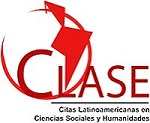Relationship of Movement Theories and the physical-social environment, in the perception of Students with disabilities of the Austral University of Chile
Keywords:
disability, social physical environment, movement dysfunction, students with disabilities, universityAbstract
The research aimed to analyze the overall socio-physical environment and its relationship with the movement theories, from a kinesiologic viewpoint and from the perspective of students with physical disabilities of Universidad Austral de Chile. A qualitative approach through action-research was used, together with multiple models and motion theories. It was concluded that independently of any disability, the main barriers are of a social nature, supported by the attitude of some academics who generate a dysfunction within the social movement. It has been seen that physical barriers are possible to be sorted out through social facilitators. Unlike social barriers, for which do not exist, or has not been demonstrated so far, the existence of any mechanism to circumvent them.Article Metrics
Abstract: 508 PDF (Español (España)): 665References
BODDE A., Seo D.-C. (2009). A review of social and environmental barriers to physical activity for adults with intellectual disabilities. Disability and Health Journal. 2. 57- 66
DAHLGREN L., EMMELIN M., WINKVIST A., 2004. Qualitative Methodology for International Public Health. Print och Media. Umeå University.
DIGITAL OBSERVATORY for Higher Education in Latin America and The Caribbean, 2005. Integración de las PcD en la educación superior en Chile. Descargado el 01-06-2011desde http://www.bcn.cl/carpeta_ temas/temas_portada.2005-10-24.2908836766/documentos_pdf.2005- 10-24.7314727854/archivos_pdf.2005-10-24.7581526712/archivo1/ baja_archivo.
FONADIS (2004). Primer Estudio Nacional de la Discapacidad en Chile. Clasificación Internacional del Funcionamiento, de la Discapacidad y la Salud. Ministerio de Planificación, República de Chile. Santiago, Chile: Fondo Nacional de la Discapacidad.
FRANSOO, Patrick (2003). Examen Clínico Del Paciente Con Lumbalgia: compendio práctico de reeducación. Barcelona: Paidotribo.
GATICA, Carolina (2007). “Centro de Integración Universal Rehabilitación con Base Comunitaria”. Tesis para optar al título de arquitecto. Universidad Austral de Chile. Disponible en http://cybertesis.uach.cl/tesis/uach/2007/ fcig261d/doc/fcig261d.pdf.
GILES-CORTI B., Donovan R.J. (2002). The relative influence of individual, social and physical environment determinants of physical activity. Social Science & Medicine. 54.1793–1812.
GUASCH, D., ÁLVAREZ M., DOTRAS P., LINARES M., GUASCH Y., DÍAZ M., SORET P., PÉREZ V., 2010 “La accesibilidad del entorno universitario y su percepción por parte de los EcD: Observatorio Universidad y Discapacidad”. Vilanova i la Geltrú: Observatorio Universidad y Discapacidad. Recuperado el 20-05-2011 desde http://upcommons.upc. edu/e-prints/handle/2117/10243.
HISLOP, Helen (1975). The Not- So- Impossible Dream. Physical therapy. 55 (10). 1069-1080.
INE, 2002. Síntesis Censal Censo 2002.Chile: Instituto Nacional de Estadísticas. Disponible en http://www.ine.cl/cd2002/sintesiscensal.pdf. Consultado el [19-06-2011].
INE, 2007. Documentos de trabajo. Encuestas a Hogares Realizadas por Instituciones Públicas 1990 – 2005. Disponible en http://www.ine.cl/ canales/sala_prensa/revistaseconomicas/documentostrabajo/8.pdf. Consultada el [19-06-2011].
JÓDAR, Xavier (1993). Eficacia y Técnica Deportiva. Análisis del movimiento humano. INO-Reproducciones, S.A: España.
LATASH, Mark (2008). Synergy. Oxford University Press: New York.
MIDEPLAN, 2003. Encuesta CASEN. Recuperado el 20-06-2011, desde http://www.mideplan.cl/admin/docdescargas/centrodoc/ centrodoc_171.pdf.
MIDEPLAN, 2006. Encuesta CASEN. Recuperado el 20-06-2011 desde http:// www.senadis.gob.cl/descargas/centro/estadisticas/CASEN2006.pdf.
MINSAL, 2001. Encuesta de Calidad de Vida y Salud. Recuperado el 19- 06-2011, desde http://www.ine.cl/canales/chile_estadistico/calidad_de_vida_y_salud/ calidadvida/folleto-cdv.pdf.
OMS y OPS, 2001. Clasificación internacional del funcionamiento de la discapacidad y de la salud. Madrid: Organización Mundial de la Salud.
PINEDA Elías. B., ALVARADO, Eva Luz de, 2008. Metodología de la investigación. 3ª Ed. Washington: OPS.
PIÑUEL, José Luis (2002). Epistemología, metodología y técnicas del análisis de contenido. Estudios de Sociolingüística. 3(1). 1-42.
QUIROGA, Ana P. de. (1997). Enfoques y perspectivas en psicología social: desarrollos a partir del pensamiento de Enrique Pichon-Rivière. (6ª Ed). Ediciones Cinco: Buenos Aires.
REGISTRO CIVIL (2011). Datos estadísticos del Registro Nacional de Discapacidad. Recuperado el 28-04-2011, desde http://www.registrocivil. cl/f_estadisticas.html.
RIMMER, James., RILEY, Barth., WANG, Edward., RAUWORTH, Amy., JURKOWSKI, Janine. (2004). Physical Activity Participation Among Persons with Disabilities Barriers and Facilitators. American Journal of Preventive Medicine. 26(5). 419-425
SAHRMANN, Shirley (2006). Diagnóstico y tratamiento de las alteraciones del movimiento. Paidotribo: Barcelona.
SALAZAR, Cristian (2010). Universidad y Discapacidad “Una Cuestión de Criterios y Voluntades”. Recuperado el 21-06-2011 desde http://www. slideshare.net/csalazarc/universidad-y-discapacidad.
WORLD HEALTH ORGANIZATION (2011). World Report on Disability. WHO: Malta.





















